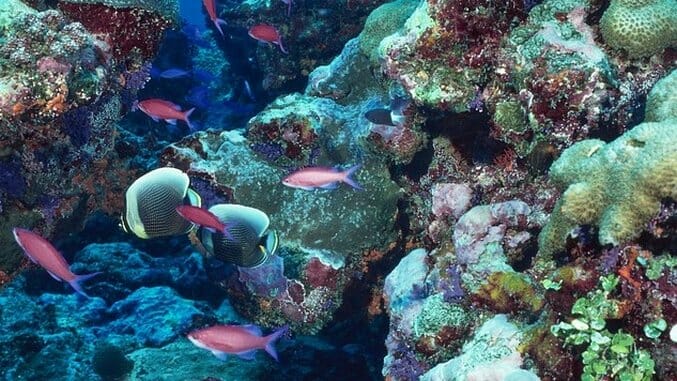Sustainability Report: High-Tech Coral Reef Monitoring

A picture of coral reef in pristine water is stunning—colorful, vibrant, multifaceted—in a word, beautiful. But looks can be deceiving to the untrained eye. According to the National Oceanic and Atmospheric Administration (NOAA), healthy coral reefs “support more species per unit area than any other marine environment, including about 4,000 species of fish, 800 species of hard corals and hundreds of other species. Scientists estimate that there may be another one to eight million undiscovered species of organisms living in and around reefs.”
Those close to land also protect shoreline and coastal habitats from storm surges while providing food for residents, both animal and human. Even though approximately half a billion people live within 100 kilometers of a coral reef, directly benefiting from its production and protection,” they’re mostly out of site and, therefore, out of mind. But human activity is threatening these marine ecosystems.
Scientists around the world are using existing technology and developing new approaches to monitor reef health. NOAA uses satellites to monitor high ocean temperatures, which can be used to predict bleaching events. Here on earth, water sampling is used to test for contaminants, according to Yui Takeshita, assistant scientist with the Monterey Bay Aquarium Research Institute (MBARI).
 Scientists study coral reefs to learn about what keeps them healthy. This BEAMS sensor that was deployed on the Palmyra Atoll to continuously measure oxygen and ph levels. (Photo credit: Jennifer Smith at Scripps Institution of Oceanography)
Scientists study coral reefs to learn about what keeps them healthy. This BEAMS sensor that was deployed on the Palmyra Atoll to continuously measure oxygen and ph levels. (Photo credit: Jennifer Smith at Scripps Institution of Oceanography)
![]()
Underwater Data Collection
While doing his graduate studies with the Scripps Institution of Oceanography Takeshita worked with a diverse team to develop an autonomous reef monitoring system called Benthic Ecosystem and Acidification Measurements System (BEAMS). The goal was to modify existing sensors to create the ability to sample the pH (a measure of the hydrogen ion concentration of a solution) and oxygen levels in ocean water. These measurements are an indicator of reef health.
“When you measure these properties you (usually) have to have a person there to take a water sample, bring it back to the lab and analyze it,” says Takeshita. “That’s very time consuming, expensive and it limits the amount of data you can collect. For example, you can’t get night-time data because in a lot of places it’s too dangerous. You can’t navigate through the reef … after spending weeks in the field, (you) come back with maybe a couple dozen measurements of production and calcification.”
Production refers to the measurement of net community production (NCP), photosynthesis and respiration by organic matter or “fleshy stuff.” Calcification refers to the measurement of net community calcification (NCC), the hard skeletal growth occurring on the reef. Both happen simultaneously, so they’re “fundamental ecosystem properties” that describe how much the reef is growing and they affect each other, according to Takeshita.
“Oxygen level tells you how much photosynthesis and respiration is happening because photosynthesis produces oxygen and respiration uses oxygen,” explains Takeshita. “If you take a few samples over time and oxygen is increasing, you can say that photosynthesis is happening. If the oxygen is decreasing, then you can say respiration is happening and how fast the oxygen changes tell you how much the photosynthesis and respiration are happening.
“The benefit of autonomous sensors is they will collect the data for you. (Another) is the amount of data you can collect continuously, through the day and night. In two weeks, we collected over 2,000 measurements of these rates.”
 In addition to being an independent ecosystem, some reefs protect coastal habitats and serve as a source of food and recreation for human beings. (Photo credit:
In addition to being an independent ecosystem, some reefs protect coastal habitats and serve as a source of food and recreation for human beings. (Photo credit: